
After Sandy, Staten Island Helps Its Own, but More Relief Still Needed
John Knefel and Molly Knefel, Truthout | Report
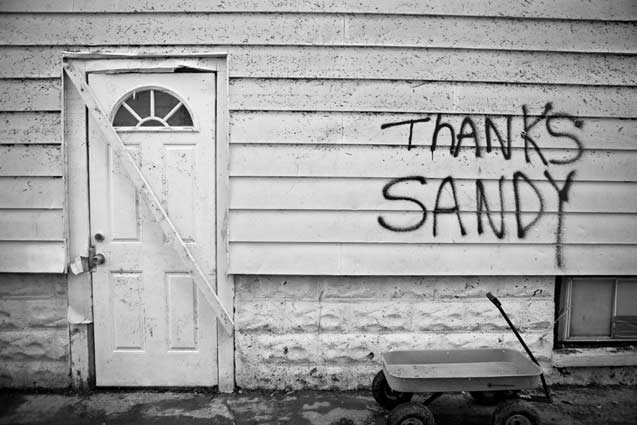
(Photo: Jessica Rose Lehrman)
Hurricane Sandy ripped through the Northeast on Monday, October 29, but four days later relief is in short supply for many residents of Staten Island. Neighborhoods there are still reeling from the devastation, including but not limited to the Midland Beach and New Dorp areas. Surveying the damage on those streets is like standing at the edge of the world, and fully cataloging the apocalyptic scenes is impossible. There was the hot tub on the wrong side of someone's fence. There was the four-door sedan, windows smashed and trunk popped open, its back half several feet off the street, resting on a wheelbarrow. There was a 10-foot trailer similarly situated, back half propped up almost gently by a garbage can.
Talking to people standing outside their houses left us with the clear impression that they felt abandoned, both by official relief efforts and the media. Every person we spoke with was desperate to tell their story, and many walked us through what remained of their house. "We've been left out" said Paul Parazzo, 46 years old. He's been in his house 18 years, and is now sleeping at his parents' house, also on Staten Island.
His sister and father were outside, amazingly cheerful and gracious given the circumstances. "Wipe your feet!" Paul's sister, a middle-aged Special Education worker, told us when we asked if we could take a look inside her brother's house. She smiled. "Just joking. Go right in." Paul's father told us we could smoke cigarettes inside, but asked us not to ash on the ground, then burst out laughing.
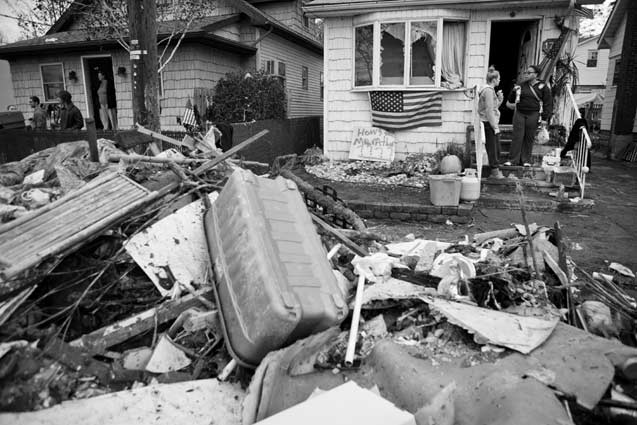 (Photo: Jessica Rose Lehrman)
(Photo: Jessica Rose Lehrman)
The New Dorp Beach house was askew in its lot, completely removed from its foundation during Hurricane Sandy. The front steps were several feet from where the door now was. Written in marker on the aluminum siding was a message: "Dear Sandy, You Will Not Break Us!" The neighboring house had careened into this one during the storm – it was at a severe diagonal in the mud. "This house came off its foundation, it's sitting against mine," Parazzo said.
We stepped inside, the soaked carpet of the house sloshing beneath our feet. A brightly colored little girl's room, recently renovated, now contained just a destroyed bed frame and snagged curtains. A glass hutch – the kind people use to display collectibles or mementos – was emptied out and covered in mud. The walls were muddy too, almost up to the ceiling. A straight line around the walls of the house showed how high the water had gone, well over six feet high.
Emerging from the back door, we walked into an alley, where we saw rows of houses as destroyed as the one we had just walked through. The ruined contents of each house were stacked in tall piles the entire length of the street. Little kids, including the one whose room we had just seen, rode their razor scooters between the trash bags. Her friend asked her nonchalantly, "How much did you cry?"
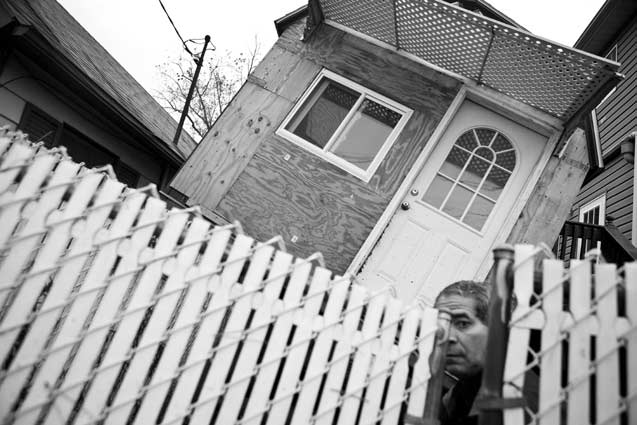 (Photo: Jessica Rose Lehrman)
(Photo: Jessica Rose Lehrman)
A few blocks down, Laurie Tedesco, 50, stood outside the house she had lived in for 12 years, surrounded by neighbors. She left as the water was rising, but returned the next day. "Top floor, the windows were blown out, the door was blown off, the side door was blown off," she said, recounting the damage. "Everything was sideways, upside down, broken windows, basement was totally flooded. The deck, separated from the back [of the house]. We lost our garage, it's in our next door neighbor's yard, and the other part of the garage is down the block." Across the street volunteers prepared food in a parking lot crowded with debris, one of many instances of neighbors providing assistance and relief where the city, state, and federal governments had fallen short.
Teresa Marie, who's helping organize relief efforts on the ground, spoke with us over the phone on Saturday morning. "My father is pulling dead bodies out of the water, and I have friends [who have walked] out of their houses and there's dead bodies floating up next to their feet." She told us that the situation on Staten Island is severely under-reported, a sentiment shared by every person we spoke with. Her voice was desperate and she apologized several times for getting emotional. "We definitely need help down here," she said. "Anything people can do to get it to us is appreciated beyond belief."
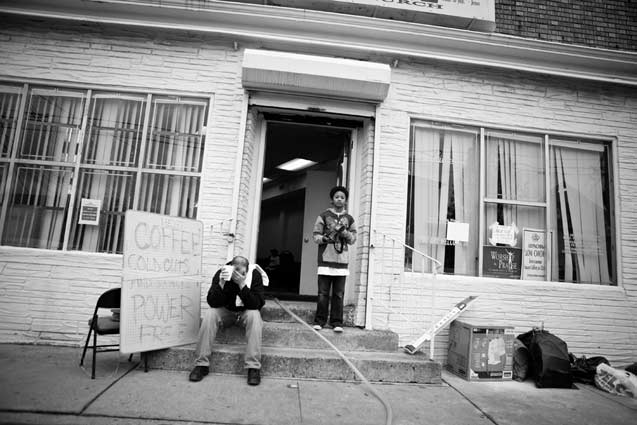 (Photo: Jessica Rose Lehrman)
(Photo: Jessica Rose Lehrman)
Gas lines stretch around the block, as they do now in so many parts of the Northeast. Cell phone reception is spotty at best, and many homes don't even have windows, much less power. The island feels remote, and it's easy for residents to feel isolated. "I have family in Long Island and they were nervous because nothing was on the news," Parazzo told us, in the alley behind what used to be his house. "They didn't even know if we were alive or not."
The death toll continues to rise, and although community groups, churches, and neighbors are doing heroic work to provide relief to residents who have lost almost everything, considerably more aid is needed. Parazzo shook his head as we walked back to the front of his house. "What's actually helping is friends and family."
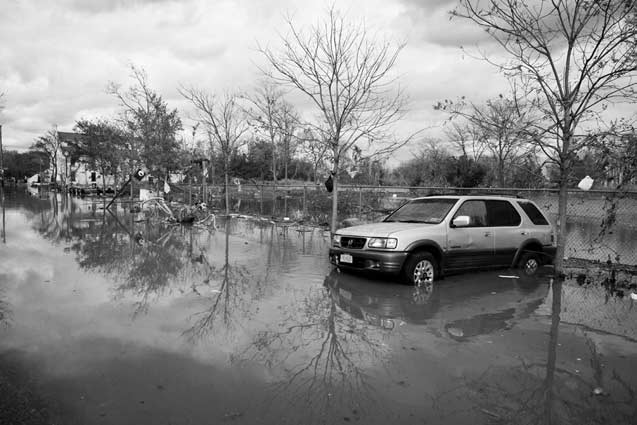 (Photo: Jessica Rose Lehrman)
(Photo: Jessica Rose Lehrman)
Copyright, Truthout. May not be reprinted without permission.
Molly Knefel
Molly Knefel is a writer, comic and co-host of Radio Dispatch, a thrice-weekly internet radio show. She also teaches drama after school.
John Knefel
John Knefel is the co-host of Radio Dispatch and a freelance writer based in Brooklyn. Follow him on Twitter at @johnknefel.
